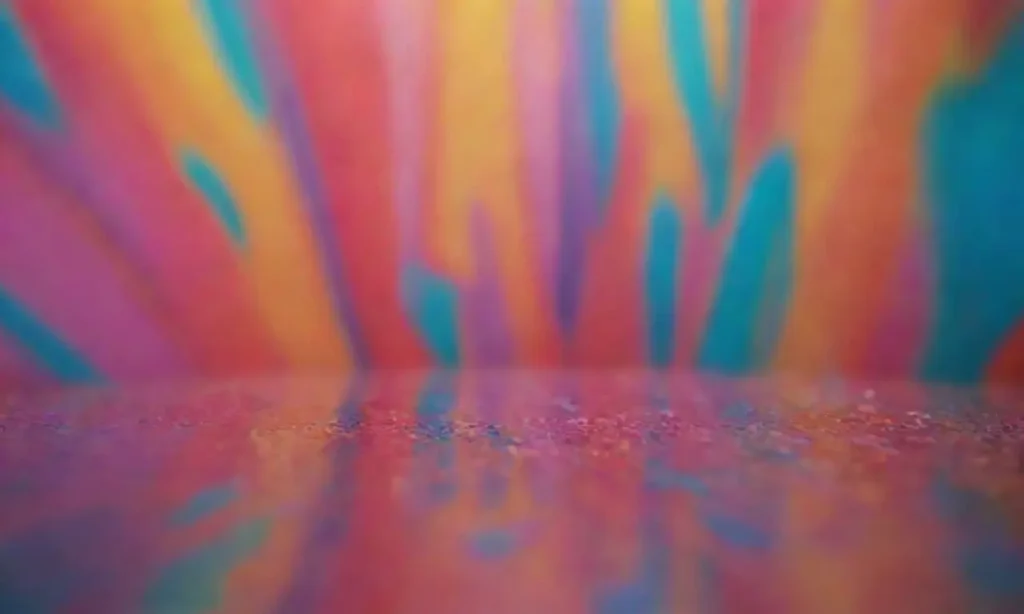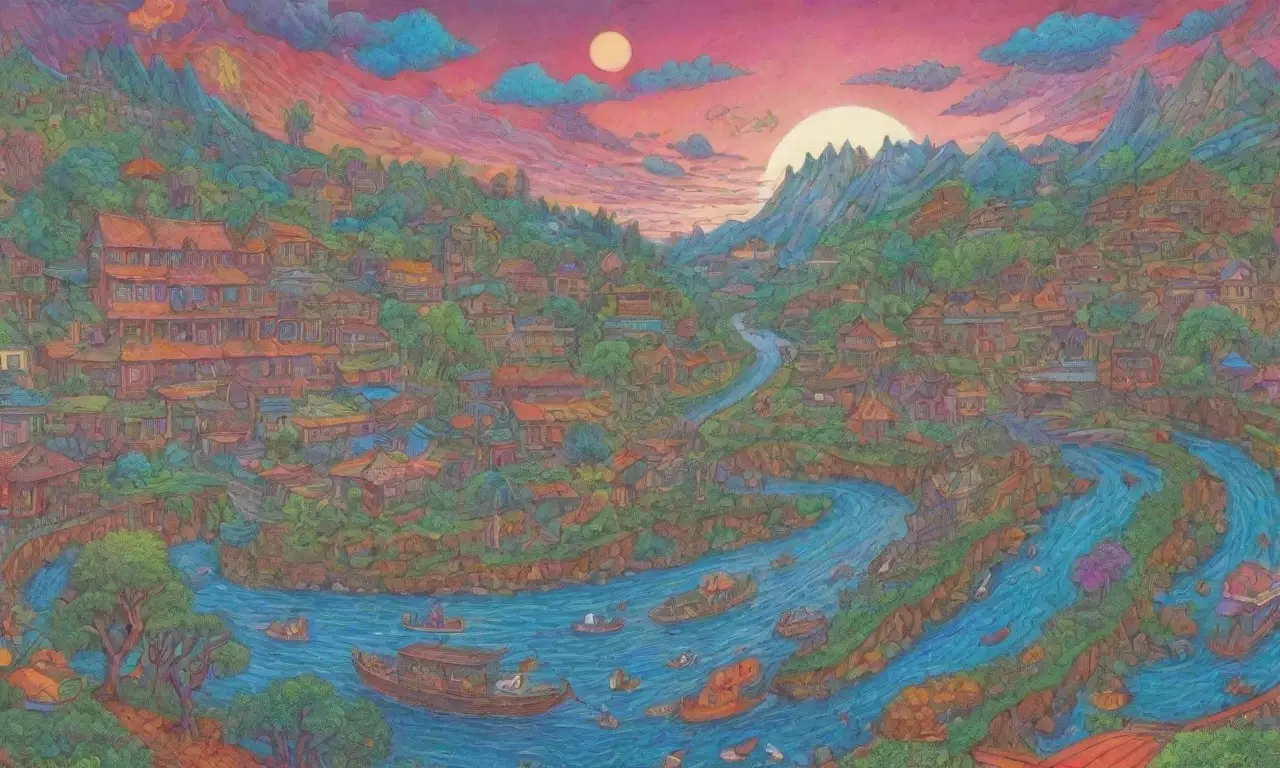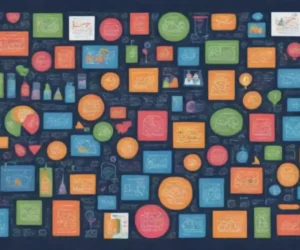
Reimagining Reality: AI's Power in Augmenting Artistic Imagination

Introduction
In the ever-evolving landscape of technology, the intersection of art and artificial intelligence (AI) has emerged as a profound force reshaping creativity and artistic expression. Artists and creators are increasingly leveraging AI not merely as a tool but as an innovative collaborator that enhances their imaginative processes. This evolution signals a new era where the boundaries of creativity are being stretched and redefined.
This article aims to explore the multifaceted relationship between AI and artistic imagination. We will delve into how AI influences various forms of art, ranging from visual arts and music to literature and performance. Additionally, we will discuss the ethical considerations arising from the intersection of AI and creativity and how artists are navigating this dynamic new landscape.
The Rise of AI in Visual Arts
The realm of visual arts has seen a remarkable transformation with the integration of AI into creative processes. Artists are now utilizing AI-powered software such as DALL-E, Midjourney, and Runway to generate images based on textual descriptions, allowing for a level of creativity that previously required extensive manual effort. By inputting specific prompts, artists can explore an array of aesthetics, styles, and concepts that can serve as inspiration for their works.
The collaboration between artists and AI systems often produces unexpected and intriguing results. For instance, an artist might request an image of a futuristic cityscape, and the AI could generate a visual representation that blends elements of cyberpunk, surrealism, and even historical architecture. This amalgamation encourages artists to step outside their comfort zones, pushing them to think in ways they might not have considered prior to the integration of AI tools. What emerges is not just a digital image but a profound expansion of the artist's imagination.
Interactivity in AI Art: Engaging Audiences with Machine LearningFurthermore, AI has opened the door to creating entirely new genres of art that blend traditional techniques with digital innovations. Artists are experimenting with generative art, a field where algorithms and code sculpt pieces that can change and evolve over time. This genre often engages audiences in a conversation about the role of the artist versus the role of technology, thereby deepening the appreciation of both human creativity and machine learning capabilities.
Machine Learning and Painting
Machine learning models, trained on vast datasets of existing artworks, are capable of replicating popular styles or even generating entirely new artistic movements. For example, the "DeepArt" app utilizes deep neural networks to analyze and apply the styles of famous painters to user-uploaded photographs. Artists can create personalized pieces that channel the essence of Van Gogh, Picasso, or Monet, demonstrating the versatility of AI in invoking artistic traditions while forging new paths in creative expression.
This capability raises stimulating questions regarding authorship and the meaning of art. If an AI can generate a work that mimics Van Gogh's style, is the result a true piece of art? Or does it lack the emotional depth that a human artist imbues in their work? While these questions may not have definitive answers, they highlight the complexities of merging technology with creativity. The ongoing discourse might stimulate a new appreciation for human expression by contrasting it with the calculated outputs of AI.
AI in Music Composition
Music is another domain where AI is leaving an indelible mark. Various programs and applications, such as AIVA, Amper Music, and JukeBox, allow musicians and composers to create melodies and harmonies with relative ease. By inputting different parameters such as genre, mood, and instrumentation, creators can collaborate with AI to craft entire compositions, enhancing their creative capabilities and expanding their sonic vocabulary.
AI-Powered Animation: Breathing Life into Digital CharactersOne of the most fascinating aspects of AI in music is its ability to study vast volumes of compositions to understand patterns, styles, and structures. AI systems can analyze tens of thousands of tracks, pinpointing what makes them resonate emotionally with listeners. This analysis informs the AI's generation of new compositions, leading to innovative sounds and arrangements that might not fit conventional music theory. The blend of calculated patterns and spontaneous creativity allows musicians to discover new dimensions in their art.
Moreover, AI-generated music has led to transformative practices in live performances. Interactive pieces created through AI can respond in real-time to the audience's reactions or the performer's playing style, creating a dynamic experience tailored to each event. This level of engagement offers a fresh perspective on the artist-audience relationship, transforming passive listeners into active participants in the creative process.
The Ethical Implications of AI Music
While the benefits of AI in music are evident, ethical considerations must be addressed. Questions surrounding copyrights and intellectual property are complex, especially when music is created using an AI's learning of existing works. If an AI generates a hit song that bears significant resemblance to existing tracks, who owns the rights? The creator who input the parameters? The developers of the AI? Or perhaps the AI itself, albeit an intangible entity?
Such dilemmas remind us of the importance of establishing clear guidelines regarding ownership, originality, and rights in an age where creative boundaries are rapidly being blurred. Upholding the value of artistic integrity while embracing technological advancements poses a challenge that requires thoughtful consideration from all stakeholders in the music industry, including musicians, record labels, and legal experts.
Personalizing Art Creation: Algorithms Tailoring to Individual PreferencesAI and the Future of Literature

Text-based art forms, like literature, are not immune to the transformative powers of AI. Tools like GPT-3 and other natural language processing algorithms are proving adept at generating coherent narratives, poetry, and even screenplays. Writers are beginning to utilize these powerful language models to jumpstart their ideas, brainstorm plots, or even create entire drafts of work.
AI’s algorithmic imagination can assist in exploring various literary styles, genres, and conventions. For example, a novelist could input a plot synopsis into an AI model, which in turn generates different endings based on diverse genres—be it fantasy, thriller, or romance. This intelligence can act not merely as a facilitator but as a catalyst for radical innovation in narrative construction, encouraging writers to push boundaries that they may not have expressed consciously.
However, the reliance on AI to generate text raises significant concerns surrounding authenticity, originality, and voice in literature. Writers may grapple with the challenge of distinguishing their unique styles in an age when algorithms provide instant access to an array of narrative voices. The internal debate about what constitutes a "human" story versus an “AI-generated” tale prompts critical discussions regarding the essence of literary artistry and the human experience.
Crafting Visual Narratives: Machine Learning for Storytelling Through ArtThe Role of Creativity in Collaboration
The dialogue around AI in literature also emphasizes the concept of collaboration. Many writers view AI as a partner rather than a replacement. By working alongside AI, authors can lighten their cognitive load, addressing writer’s block or exploring narratives in unconventional directions. Prominent figures in the literary community such as authors Margaret Atwood and Neil Gaiman have openly expressed their curiosity about AI’s role in literature, underscoring its potential to augment rather than hinder human creativity.
In this context, AI's primary purpose is not to supplant human authorship but to forge new avenues for creativity. As writers continue to temper AI-generated content with their emotional insights, character development, and thematic exploration, the result could lead to more diversified literary expressions. Ultimately, the collaborative approach invites all contributors—human and machine alike—to redefine contemporary literature.
Conclusion
The integration of AI within the creative sphere marks an exciting chapter in the evolution of artistry and expression. As artists across disciplines adopt AI technology, they discover unique opportunities to transcend traditional boundaries and broaden their imaginative horizons. From the dynamic fusion of styles in visual arts to the inventive soundscapes emerging in music, and the collaborative storytelling in literature, AI has equipped creators with tools to explore their potential in unprecedented ways.
However, amid the excitement of this technological revolution, it is crucial to remain vigilant regarding the ethical implications that arise. Questions of ownership, authenticity, and emotional depth are not merely theoretical constructs; they engage with the very essence of what art means in the context of our rapidly changing world. By approaching AI with a sense of curiosity—and the necessary skepticism—artists can leverage these technologies to enrich their crafts while maintaining their authenticity.
Unleashing Creativity: How Machine Learning Algorithms Transform ArtIn this dynamic interplay of creativity and AI, we stand at the cusp of a new artistic renaissance. The kinetic dance between human ingenuity and machine learning paves the way for a future where imagination is not limited but enhanced. As we continue to relish the art born from this collaboration, we are reminded that creativity knows no bounds—merging our realities with the infinite possibilities of AI empowers us to reimagine what is possible in artistry and beyond.
If you want to read more articles similar to Reimagining Reality: AI's Power in Augmenting Artistic Imagination, you can visit the AI-Based Art Creation category.



You Must Read